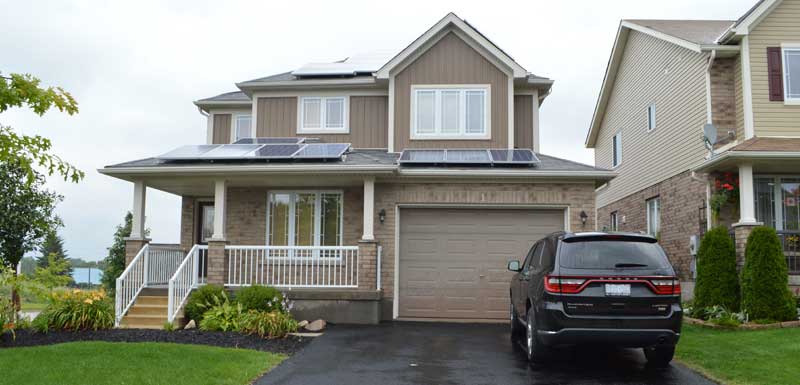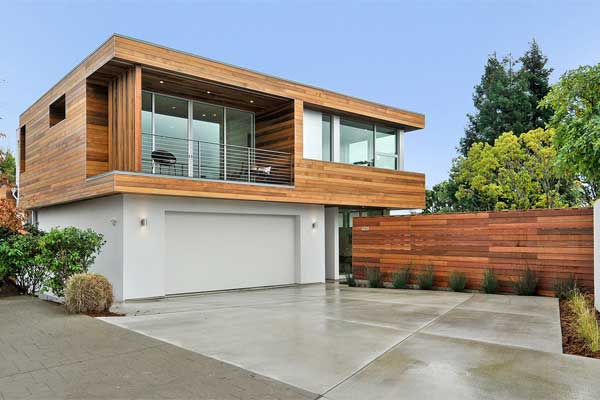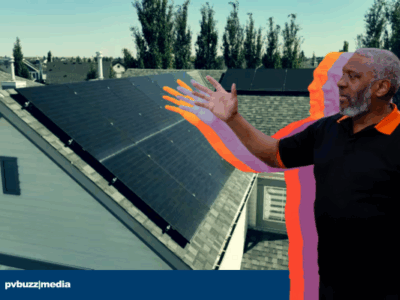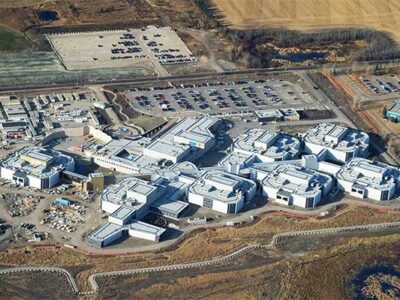Net-zero homes generate as much energy as they consume over the course of the year typically from on-site renewable energy generation.
In fact, there are now many net-zero homes throughout North America and this concept is growing in popularly.
“The revolution taking place within the housing industry is astounding,” says Chuck Piper, co-owner of Sundog Solar, an installation company based in Maine. The idea of a home being so efficient that it’s impact on the environment is negligible has been a growing and important trend. Having a solar array can provide all the power a net zero home needs to achieve this goal.”
Energy-efficient Design
Net-zero buildings typically feature an energy efficient design that cuts down on heating and cooling expenses and energy use.
The northern U.S. and most of Canada have a long heating season while much of the southern U.S. has a long cooling season.
High-efficiency homes typically feature air sealing and generous amounts of insulation to prevent conditioned air from escaping and to maintain even indoor temperatures despite outdoor conditions.
Air sealing helps prevent drafts, which makes the home more comfortable.
Many older homes and inefficient new homes have lots of gaps and cracks in the home envelope that enable unconditioned air to enter, wasting energy and driving up utility bills.
In some instances, net-zero home builders utilize a blower door test to verify that the home is sufficiently airtight.
In colder climates, south-facing windows can help to passively heat the home with the sun. Orienting the house to the south helps promote solar gains, saving energy.
Overhangs can help shield the sun in warmer climates when passive heating is not desired, helping to maintain comfortable interior conditions and reducing cooling bills.
Renewable Energy Generation
The majority of net-zero homes have on-site renewable energy systems such as solar photovoltaic panels installed on the roof or ground to produce electricity known as solar energy — using sunlight.
Solar energy is one of the most common sources of renewable power.
“It is important that the solar panel system be properly sized to generate enough electricity for the home throughout the year,” says Bob MacCannell, CEO & President of Brightworks Energy, an energy solutions provider in Ontario, Canada. “When the system generates as much energy as the house consumes over the course of a year, the home is considered net-zero.”

Solar panels installed by Brightworks Energy on a residential home in Ontario. /Brightworks Energy
It is helpful to design net-zero homes with solar power generation in mind to ensure the home has the solar potential necessary for the sun to generate all the home’s electricity.
This involves orienting the house to take advantage of the sun, having a large south-facing roof space, limiting solar obstructions (trees, chimneys, dormers, and other buildings), and having an ideal roof pitch given the latitude.
If roof space is limited, high-efficiency solar panels, microinverters, or power optimizers can help boost solar electricity production.
Many electric utilities have net metering programs that credit homeowners for excess daytime solar power.
The home then draws from the power grid during the night, in cloudy weather, or when electricity demand is particularly high.
Carbon Emissions Reductions
There are several reasons to live in a net-zero energy home. Many homeowners want greater energy independence and less reliance on fossil fuels.
Others want to avoid energy price volatility. Many net-zero homes are all electric, thus avoiding the use of fossil fuels and producing electricity from renewable sources.
High-performance homes are also known for being lower maintenance and very comfortable, with fewer temperature fluctuations, drafts, and high indoor air quality.
Mechanical Ventilation
Many high-performance homes are virtually airtight.
Mechanical ventilation is often necessary to ensure high indoor air quality, mitigate odors, and to prevent moisture issues, especially in the kitchen, bathroom, and laundry room. Heat recovery ventilation systems are commonly used in high-efficiency homes, providing continuous, balanced ventilation.
These systems transfer heat from the intake air to the exhaust air, saving energy while boosting indoor air quality.
Net-zero Home Construction Expenses
Ultra high-performance homes have a reputation for being prohibitively expensive, even for people building new homes.
Although some certainly are, some builders are making homes that are affordable for middle-class families.
Belfast Cohousing & Ecovillage (BCE) in Midcoast Maine features 36 units built to the Passive House standard, a rigorous German standard for energy efficiency with criteria for energy demand and airtightness.
Of the 36 homes at BCE, 25 have solar PV systems to provide on-site renewable energy.
Sundog Solar recently installed a solar system at BCE with a lithium-ion battery.
Grid outages are common in Midcoast Maine, and battery backup will ensure the couple can continue working from their home office during outages.
Despite its location in a cold climate, these all-electric houses feature a modest electric baseboard heating system. Because the houses are virtually airtight, mechanical ventilation is necessary to prevent moisture issues and to promote healthy indoor air.
The homes feature Zehnder heat recovery ventilation units, the most efficient ventilation units of their kind on the market.
These units bring fresh air into the bedrooms and living spaces while exhausting an equal quantity of stale, contaminated air from the kitchen, bedrooms, and mechanical rooms.
Although energy use varies by the family, there are 1,500 square foot units in BCE that are net-zero with a 4.5 kW solar energy system.
Some BCE homeowners have reported being net zero every year since their homes were constructed in 2012 and 2013.
Designing the homes to be all electric made it easier to utilize clean energy. “We didn’t want to truck in deliveries of fossil fuels, so oil and propane were out,” says Alan Gibson, a principal for GOLogic, the firm that designed and constructed the homes at BCE. “If you can afford a PV system to meet all of your annual electricity needs, [electric heat in a super-efficient house] can be a greener alternative.”

Quebec Street Net-Zero Residence by G.Ologic /Trent Bel
Most new homes in Midcoast Maine require a much more extensive heating system yet typically have less expensive insulation, windows, and doors.
Gibson estimates that making the BCE homes so energy efficient added 7% to the project cost (separate from the cost of the solar system).
Some of these additional costs, such as installing standing seam metal roofs, will make the homes more durable and decrease future maintenance and repair costs.
Homes of the Future
Building codes are gradually requiring new homes to consume less energy.
More energy efficient building products are available on the market than ever before, and solar panel efficiency is increasing. At the same time, net-zero homes are growing in popularity.
The homes of the future will consume less energy and conserve precious resources.













Comments